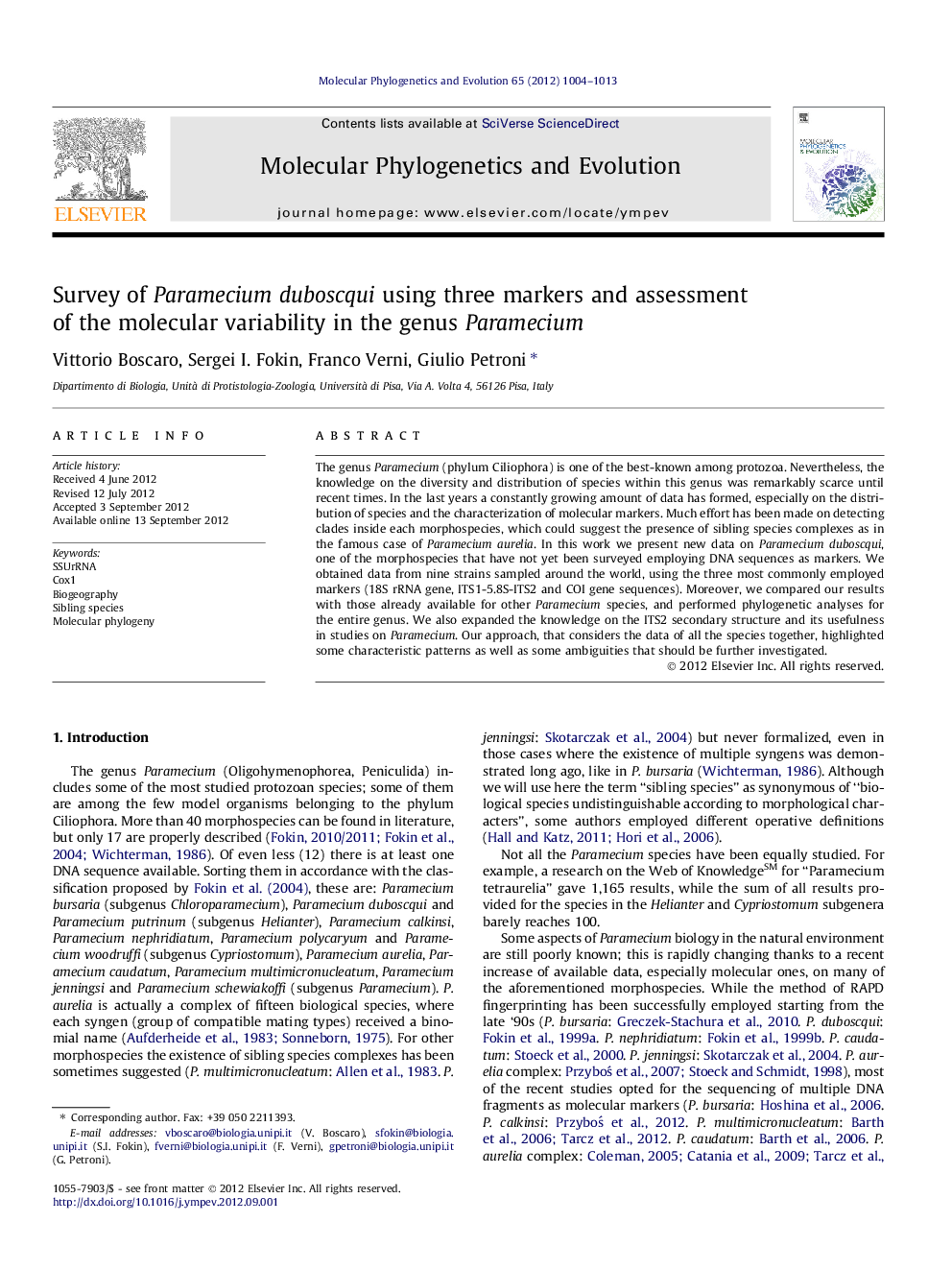| Article ID | Journal | Published Year | Pages | File Type |
|---|---|---|---|---|
| 5920144 | Molecular Phylogenetics and Evolution | 2012 | 10 Pages |
The genus Paramecium (phylum Ciliophora) is one of the best-known among protozoa. Nevertheless, the knowledge on the diversity and distribution of species within this genus was remarkably scarce until recent times. In the last years a constantly growing amount of data has formed, especially on the distribution of species and the characterization of molecular markers. Much effort has been made on detecting clades inside each morphospecies, which could suggest the presence of sibling species complexes as in the famous case of Paramecium aurelia. In this work we present new data on Paramecium duboscqui, one of the morphospecies that have not yet been surveyed employing DNA sequences as markers. We obtained data from nine strains sampled around the world, using the three most commonly employed markers (18S rRNA gene, ITS1-5.8S-ITS2 and COI gene sequences). Moreover, we compared our results with those already available for other Paramecium species, and performed phylogenetic analyses for the entire genus. We also expanded the knowledge on the ITS2 secondary structure and its usefulness in studies on Paramecium. Our approach, that considers the data of all the species together, highlighted some characteristic patterns as well as some ambiguities that should be further investigated.
Graphical abstractFigure optionsDownload full-size imageDownload as PowerPoint slideHighlights► We have performed the first molecular survey on the morphospecies Paramecium duboscqui using three DNA sequences as markers. ► P. duboscqui strains are divided in three geographically separated clades, perhaps corresponding to sibling species. ► We performed the most marker- and sequence-rich molecular phylogenetic analysis of the genus Paramecium so far. ► Some Paramecium morphospecies are more molecularly diverse than others; some appear non monophyletic and require revision.
